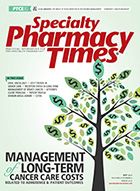Publication
Article
Specialty Pharmacy Times
The State of the Cancer Moonshot Project
Author(s):
The final days of the Obama administration witnessed the federal government launch several initiatives seeking to advance the battle against cancer.Â
The excitement surrounding the potential to advance cancer research reached a fever pitch in 2016’s State of the Union address, when President Barack Obama officially recognized Vice President Joe Biden’s efforts to find a “moonshot” to end cancer.
The efforts in this area thus far have been to match federal funds with data-sharing mechanisms that investigators can use to share information on therapies for patients battling various aspects of the disease. Shortly after this announcement, we became familiar with Moonshot 2020, whose official name is the National Immunotherapy Coalition.
The coalition, among the most comprehensive cancer collaborative initiatives ever launched, seeks to accelerate the potential found in combination immunotherapies to become the next-generation standard of care for cancer. The initiative involves randomized trials in patients at all stages of the disease, with 20 tumor types, over the next 36 months. The findings will hopefully lead to the development of a vaccine-based immunotherapy for cancer by 2020.
The organization’s goal is to advance oncology to the point where cancer is a manageable condition, mirroring the current treatments for chronic diseases. Soon after the State of the Union address, the National Cancer Institute (NCI), part of the National Institutes of Health, became the overseer of the Cancer Moonshot’s goals. To help ensure those goals are met, the NCI created a task force with external experts, including the National Cancer Advisory Board (NCAB).
A panel of experts, established as a working group of the NCAB, was charged with providing advice on the vision, proposed scientific goals, and implementation of the Cancer Moonshot. The panel’s report described 10 transformative research recommendations to reach the goals of the Cancer Moonshot in progressing cancer prevention, diagnosis, and treatment within 5 years.
Very importantly, the NCI sought funding opportunities within its vast network to address the goals of the Cancer Moonshot. The NCI has a resource dedicated to announcing these funding opportunities. Progress on this issue reached a crescendo with the passage of the 21st Century Cures Act, enacted on December 13, 2016. It allocated $1.8 billion for cancer research over 7 years, while simultaneously making sweeping regulatory changes at the FDA that are designed to help speed approvals of drugs and medical devices.
The final days of the Obama administration witnessed the federal government begin on a course of battling cancer through initiatives such as the CMS Oncology Care Model and the FDA’s newly created Oncology Center for Excellence.
With the transition to the Trump administration, many are wondering what is next for oncology. Will the groundwork laid by the Obama administration be continued? At this point, it is too early to tell.
Barely into Donald Trump’s presidency, the major healthcare issue thus far has been the repeal of the Affordable Care Act and its replacement, the American Health Care Act. Legislators have also continued the ongoing discussion of whether the costs of prescription drugs are too high.
I believe the answer to whether the heightened focus on oncology will continue will be found with former Vice President Joe Biden. While Biden has kept a low profile since leaving office in late January, it has been confirmed that his work will continue through an independent nonprofit organization—yet to be named—that will have no affiliation with any oncology organization, to retain neutrality.
Biden has stated that the nonprofit group will focus on many issues raised in the moonshot plan, including the need to improve the sharing of research data and medical records, boost clinical trial participation, and search for new ways to enhance the treatments provided by community oncologists. Biden also stated the need to reduce racial disparities in diagnosis and treatment.
According to the Center for Medicare & Medicaid Innovation, 1.6 million people are diagnosed with cancer annually in the United States. Therefore, it is in the interest of everyone, regardless of political affiliation, to find better solutions for cancer prevention, diagnosis, and treatment. Not only would more targeted solutions lead to improvements in patient outcomes, but we would undoubtedly witness a more productive US workforce and reductions in ever-rising drug costs.
It remains to be seen whether Cancer Moonshot 2020 will indeed lead to substantially improved cancer care, or if a new culture of sharing information via electronic health records will emerge. The project’s start was ambitious and hopeful—but there is much, much more work to be done. 
About the AuthorRON LANTON III, ESQ, is president of True North Political Solutions, LLC. He has over 20 combined years of government affairs and legal experience. This includes activities on the municipal, state, and federal levels of government. Most recently, he worked for a pharmaceutical wholesaler where he created and oversaw the company’s government affairs department, served as their exclusive lobbyist, and advocated for the company’s various health care customers. Prior to that, Ron worked at a government affairs consulting firm in Arlington, Virginia, where he focused on health care, energy, commerce, and transportation issues. He has also clerked for a federal magistrate, was appointed as a municipal commissioner on environmental issues, and has served as consultant to Wall Street firms on financial issues. He has been a featured industry speaker on issues such as pharmaceutical safety and health care cost containment. Ron earned his juris doctor from The Ohio State University Moritz College of Law and a bachelor of arts from Miami University of Ohio. He is also a “40 Under 40” award recipient. He is admitted to practice law in New York, Illinois, and the District of Columbia.







